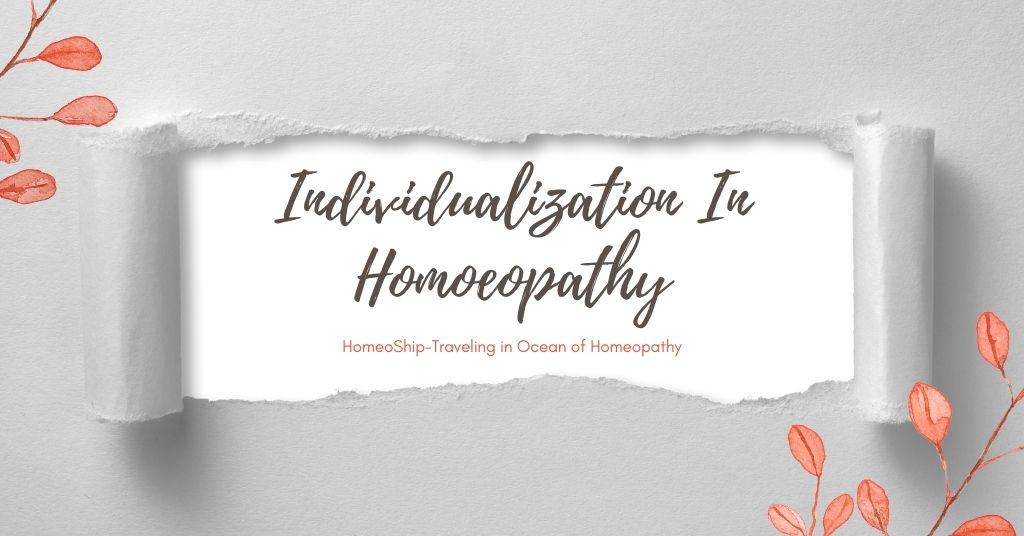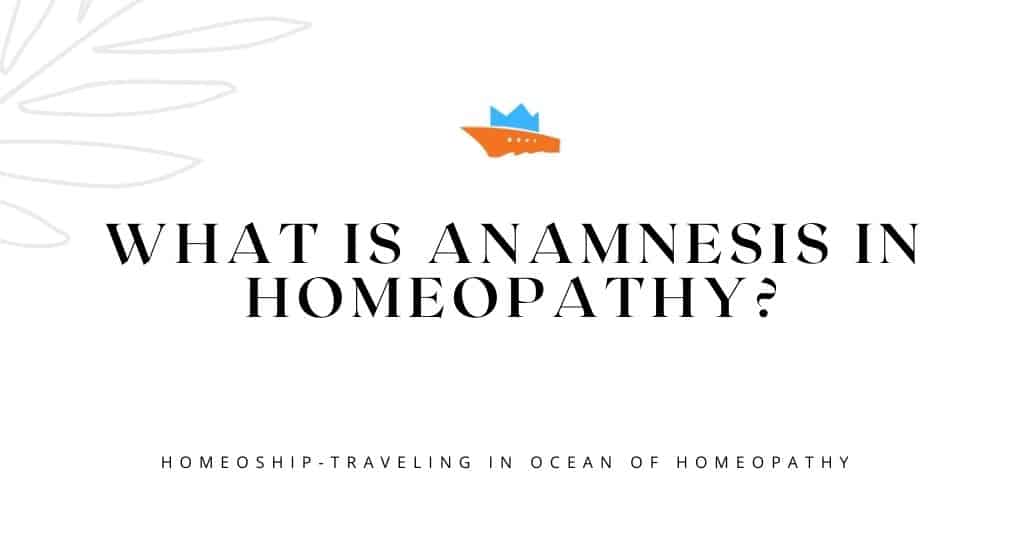Contents
The question of whether Hahnemann’s miasms are microorganisms? Is there any correlation between Hahnemann’s views and microbiological theories? This is a highly controversial issue in current-day homeopathy.

Based on their opinion on this subject the homeopaths can be divided into two groups:
One school does not believe in the above comparison, for those miasms of Hahnemann are the noxious, dynamic, inimical forces only. They can be termed as the spiritual school. They do not accept the material conception of miasms. Dr. J.T. Kent, Dr. J. H. Allen, etc belong to this school.
The second school is the scientific school. Dr. Stuart Close, Dr. Wheeler, Dr. Tyler, Dr. Sir John Weir, etc belong to this school. They strongly believed and supported that Hahnemann was explaining the microbiological terms in his writings, but he had used the terminologies of his times. Hence they argue that Hahnemann has to be hailed as “the father of microbiology”.
Mode of Infection In Theory of Chronic Diseases and the Microbiology
Stuart Close says, “The greater practical value of Hahnemann’s theory of chronic diseases has never been fully appreciated because it has never been fully understood”.
Comparative study of the concept of infection of the modern medical terms and Hahnemann’s comments on the mode of infection of each miasm seem to have similarities. Observe the following statements:
“With respect to the origin of these three chronic maladies as in the acute, miasmatic eruptional diseases, three different important movements are to be more attentively considered than hitherto been done,” says Hahnemann.
1. Firstly, the time of infection.
2. Secondly, the time during which the whole organism is being penetrated by the disease infused, until it has developed within.
3. Thirdly, the breaking out of the external ailment.
In the first point, Hahnemann is indicating that the miasm enters an organism through the process of infection. In the case of psora, general touch to the skin, in the case of the venereal miasms syphilis, and sycosis, impure coition is the mode of infection. Further, he says, “The infection with the miasma, as well of the acute as of the above mentioned chronic diseases, takes place, without doubt, in one single moment, and that moment, the one most favorable for infection.” The mode of infection explained in bacteriology in the case of venereal disease goes well hand in hand with the Hahnemannian explanation.
The second point reminds us of the incubation period of modern science. The miasmatic disease does not manifest immediately after the infection but after a few days when the infection has dynamically spread into the entire vital force.
Regarding the third point, once the incubation period is over, i.e. the infection has been communicated to the entire parts of the body, the symptoms of the disease manifest in a visible and observable manner.
Miasms and Their Comparison With the Specific Micro-organisms
At the time of the Hahnemann, the microscope was not invented. All his conclusions were made by his clinical observations, including his classification of diseases. Hahnemann used the term miasms in a more precise form.
During Hahnemann’s time, the term “miasm” was vaguely used by many physicians as morbific emanations from purulent organic matter, effluvia arising from the bodies of the patients, etc, but, in using the term miasm, Hahnemann had some other idea in mind. The following explanation given by Stuart Close makes it clear.
In the year 1831, Asiatic cholera invaded Europe. Hufeland, one of the famous physicians of those times, believed and taught that cholera was an atmospheric–telluric origin. Hahnemann protested against this belief in his essay “The mode of propagation of Asiatic cholera”.
He explained that cholera miasm is communicable by contagion only and propagated from one individual to another. “On board ships, in those confined spaces filled with mould, watery vapors, the cholera miasm finds a favorable element for its multiplication”. “And grows into an enormously increased brood of those excessively minute, invisible living creatures, so inimical to human life of which the contagious matter of cholera most probably consists”.
In this essay, Hahnemann uses the terms like “communicable by contagion”, “multiplication”, “growth”, “minute living creatures”, and even “animated beings” etc. The only living thing will grow and multiply. Hahnemann’s explanation of the mode of transmission and spread of cholera though not understood by then practitioners, came out to be true and is close to today’s microbiological terms.
In § 73, he explains about different types of acute diseases as individual, sporadic, epidemic diseases. In his attempt to explain the epidemic diseases he states, “These diseases generally become infectious (contagious) when they prevail among thickly congregated masses of human beings”.
Hahnemann’s explanation of the half acute miasms (hydrophobia), and half spiritual miasm (smallpox), also suggest that his views were far ahead of his time and equal to modern concepts. “These various acute, half spiritual miasms the peculiar characteristic that after they have penetrated the vital force in the first moment of contagion (and each one in its own way has produced the disease) and then, like parasites have quickly grown up within it and have usually developed themselves by their peculiar fever after producing their fruit (the mature cutaneous eruption which is again capable of producing its miasma)- they again die out and leave the living organism again free to recover?”
One of the paragraphs in Chronic diseases goes like this, “The chronic miasms disease parasites, which continue to live as long as the man is seized by them is alive, and which do not die off themselves like acute miasms”.
Infection and the Theory of Latency

Microbiology defines that lodging and multiplication of microorganisms in and around the tissues can be termed as infection. The mere presence of bacteria does not produce the disease. Some organisms may remain latent or hidden inside the body for a long time. They produce the disease only when optimum conditions for bacterial growth arise like lowering of the host resistance etc.
Today’s modern science calls this condition as latent infection. Years before this invention, Hahnemann had explained that miasms like psora, syphilis, and sycosis may remain latent for a long period “until circumstances awaken the disease slumbering within and thus develop its germs”. This doctrine of latency was opposed by most of the physicians of that time.
More than 50 years before Koch’s discovery, Hahnemann explained the nature and spread of cholera organisms purely by his clinical observation. Hahnemann used the terminologies of his day. “Modern bacteriological science, by long independent research slowly arrived at the goal Hahnemann reached more than half a century before in regard to the nature and causes of certain form of disease” adds Stuart Close.
Chronic Miasms and their Comparison With Specific Micro-organisms
While explaining the miasms Hahnemann meant “Contagious, or infectious principle embodied in some living parasitical micro-organisms with an incredible capacity for multiplication and growth”.
The sycotic and the syphilitic miasms can be undoubtedly compared with Neisseria gonorrhea and the Treponema pallidum respectively. But confusion and uncertainty still prevail regarding the comparison of psora with any micro-organism.
The superficial observers considered the Acarius scabii or Sarcoptes hominins as Hahnemann’s Psora because it is an itch mite. In the years 1791 and 1792, while translating Monro’s materia medica and on July 30 and 31 of 1792 in a German daily called advertiser. He explained clearly his views on itch mite. He defined them as exceedingly small animals, a kind of mite, etc. He recommended external lotion of Sulphur in such cases. Thus, we can rule out that the psoric theory is entirely different from this above comparison.
Further, Hahnemann was against the local application in case of psoric itch, as he explained in his chronic diseases which may drive the miasm inwards leading to complications. So, considering the itch mite as the psora is improper.
Stuart Close tried to compare psora with the mycobacterium, as Hahnemann regarded leprosy as the typical ancient form of psora. Modern bacteriology states that the lepra bacilli and the tubercular bacilli resemble each other even in their staining techniques.
Stuart Close comments, “The two terms psora and tuberculosis are synonymous”. But at the same time, he does not accept the axiom, “kill the germ cure the disease”. He further comments, “Bacteriology can never serve as a basis for a reliable and efficient therapeutics for the individual. Since micro-organism is only one of the many causes of diseases”. “It is at this point that the necessity appears for a general principle of therapeutics” i.e. Homeopathy.
Read more about Maisms
- What is Sycosis Miasm in Homeopathy?
- What is Psora Miasm in Homeopathy?
- What is Syphilis Miasm in Homeopathy?
Psora and the Search for Similar Organisms
Dr. B.K.Sarkar in his “Hahnemann’s Organon” reminds us about the findings and views of Mackenzie. Mackenzie co-related psora with the pyogenic organisms like streptococcus and staphylococcus. He called psora as the focal infection.
Dr. Edward Bach, an allopath, and Dr. C.E. Wheeler a famous homeopath from London hospital had a hypothesis that “Psoric miasm of Hahnemann and the non-lactose fermenting intestinal microorganisms of the coli-typhoid group are similar”. B. proteas, B. Dysentery, B. Morgan, B. Foecalis, alkali genes, B. Coli mutable, B. Goerthen, and B. no:7, etc are the non-lactose fermenting organisms, that lower the resistance of a person and predispose him to many secondary bacterial infections.
The manifestations of disease vary from the susceptibility and the site of invasion of the bacterium. Despite such efforts, Hahnemann’s psora remains unidentified. But the scientific school is optimistic that shortly we will be able to invent a new micro-organism that is similar to Hahnemann’s psora.
Dr. J.H. Clarke, the author of the book “The prescriber”, writes “There is no necessary to limit the number of chronic diseases to the three Hahnemann described. The scientific minds can find other miasms”. That is the reason why we find so many miasms like AIDS miasm and cancer miasm coming up in our contemporary literature.
Hahnemann’s sycosis and syphilis strongly support the idea of scientific school. But we are unable to compare psora in the modern parameters.
Controversy

Stuart Close regrets that instead of hailing Hahnemann as the father of microbiology, the old school ridiculed him. This happened because 18th-century medicine was full of speculative theories and fanciful explanations regarding the nature of diseases. But each of them failed to give some tangible and definitive explanation regarding the subject.
In such conditions, Hahnemann came with a new method of treatment with purely experimental drug proving and the well-known method of the law of similia. He aimed to cure the sick and to avoid empty speculations by creating another theoretic medicine. Hence, in his early days of the invention of the homeopathic system, Hahnemann was busy perfecting his rational medicine.
In his later editions, when he came with semiscientific and semi-philosophical explanations regarding health, disease, and cure, they could not supply any tangible proof. Medical men of those times were looking forward to scientific medicine with tangible, demonstrable proof. Microscopic demonstration of bacteria as the cause of disease immediately caught everyone’s attention.
Thus, was born the medical axiom, “kill the germ and cure the disease”. The terms like “acute miasm” and “chronic miasm” sound good in the domain of homeopathy. But when we like to compare them by replacing the term miasm with bacteria, it does not seem logical to the scientific minds.
Moreover, Hahnemann recommends the consideration of constitution, hereditary factors, predisposing and environmental factors in treating a disease. There are no specific remedies for miasms in homeopathy. Each patient has to be treated according to his individualistic character in disease and health. Hence the subject of whether Hahnemann’s miasms are the micro-organisms of modern microbiology or not remained as a highly controversial subject in the medical field.



